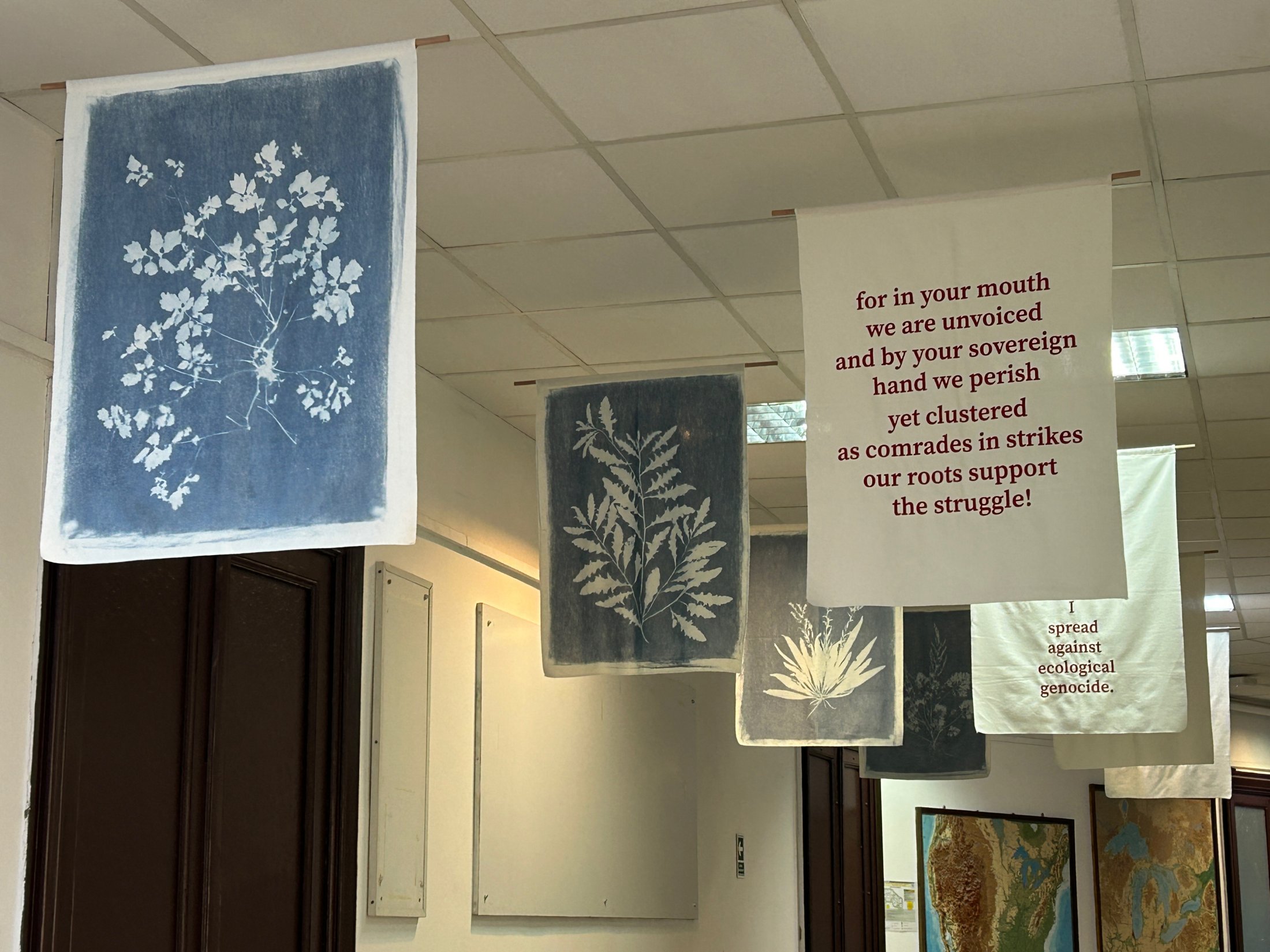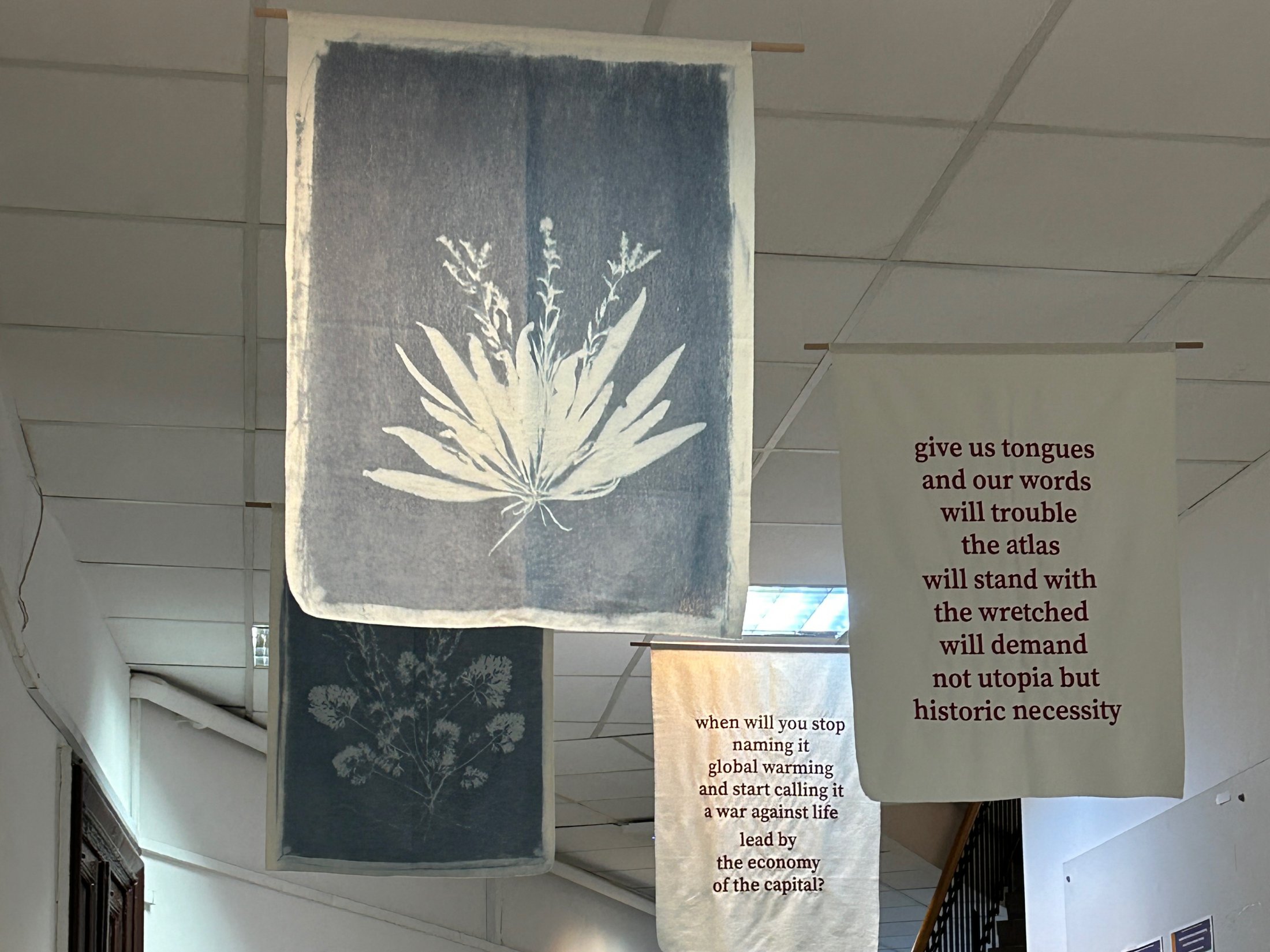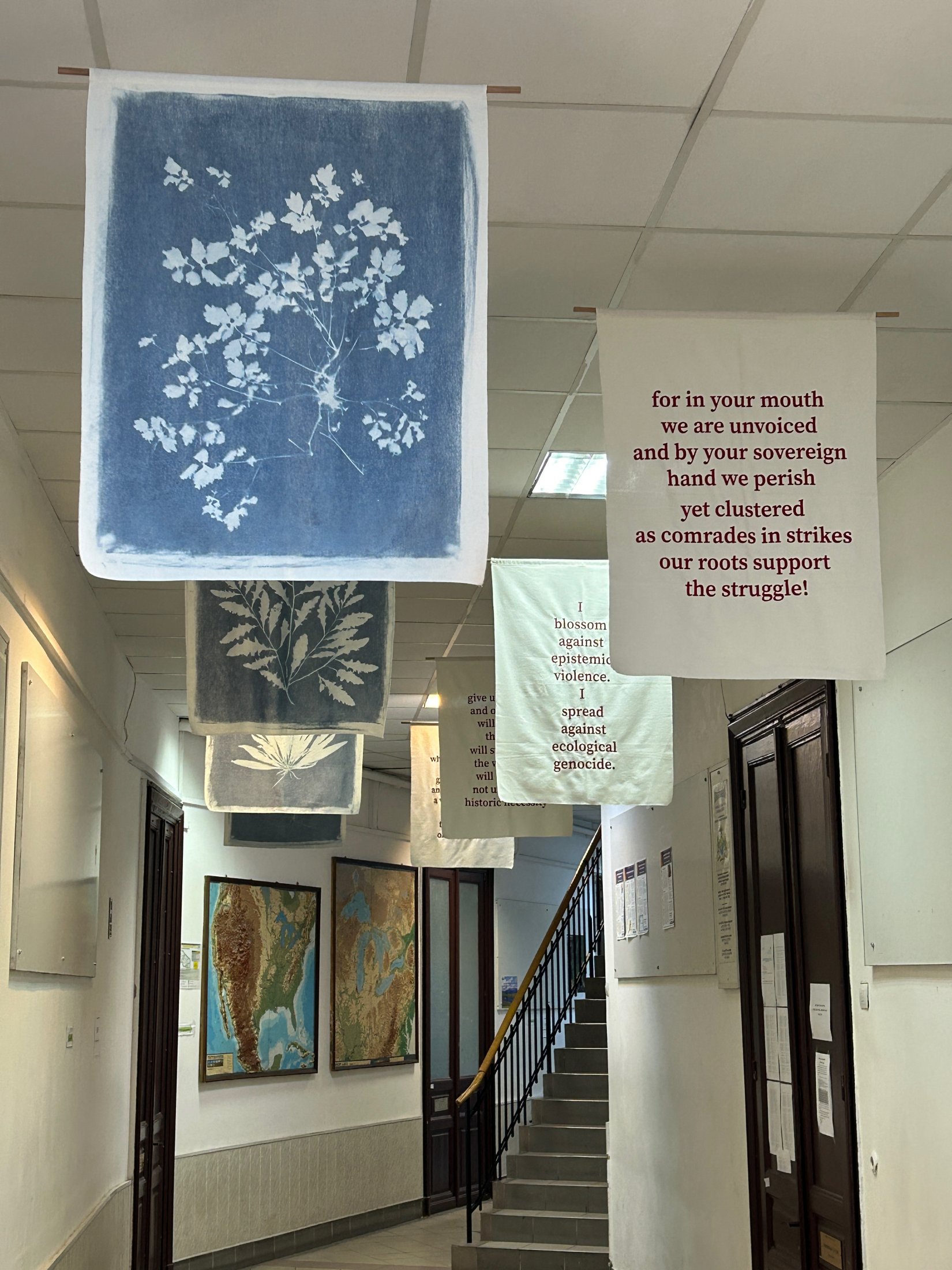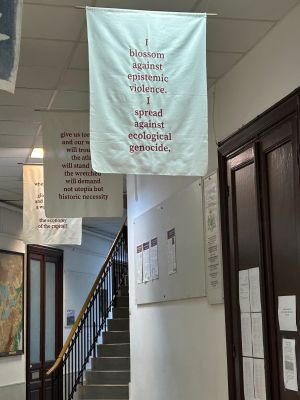part of Perturbări și eroziuni, 2023, Faculty of Geography, UB; The Senses of Plants / Die Sinne der Pflanzen, Villa Merkel 2024; MQ Pop-Up Schauraum, 2025
The research for Herbarium (2023-ongoing) has as a starting point the political and economic implications of the development of botany as a modern science. Beginning in the 16th century along with the violent European colonizing missions, the first private and public gardens were constructed. Their construction was backed by religious justifications and warrants, such as the restoration of the Garden of Eden. It was during this period that botany began to gain popularity among the elites and the affluent appropriating classes. Whether for research, cultivation or ornamental purposes, assembling large collections of plants was established as a symbol of economic imperialism, manifested not only trough the erasing of the local names of plants, but also trough eradicating their biogeography. The practice of renaming the plants into Latin and the invention of a universalizing botanical taxonomy culminated in the mid-18th century with the studies of Carl Linnaeus and it marked the emergence of a monoculture of scientific knowledge based on the exclusion, subalternization, and racialization of ecological and epistemic systems which were considered inferior and minor from the perspective of the European logic of supremacy and profit. Today, this logic manifests itself through industrial extraction operations, intensive agricultural programs, and military actions. Land reshaping practices are echoed by practices of extending political influence. The consequences of these actions, whose histories are to be found inscribed in modernity, continue to be camouflaged by the defenders of capitalism under the name of natural disasters and justified by the rhetoric of global warming. Herbarium appears in this framework as a project which reconsiders both botanical scientific knowledge and aesthetic gaze from the perspective of their historical constitution. Far from redoing a process of cataloging and ranking plants, this project appears as an action of researching and collecting weed plants that serve less to public and exhibition collections in museums or botanical gardens. This work proposes an articulation of the rupture between human and nature and a materialist critique of the economic and epistemic system that made this rupture possible. Hence, the embroidered annotations that accompany the textile panels printed using the cyanotype technique.
Printed plants: Creeping Thistle, Viper’s-bugloss, Greater celandine, Common wormwood.
Herbarium is inspired by the notebooks grouped under the same name of the Marxist theorist Rosa Luxemburg.











